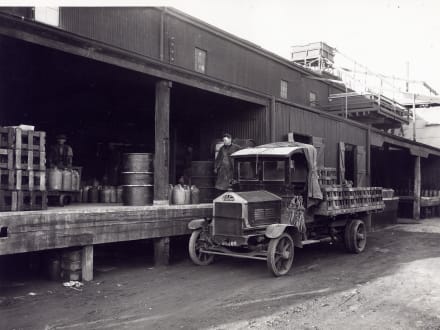History


1919: Caustic soda and chlorine production commences at the Mt Lyell Mining & Railway Co Chemical Works site in Yarraville, Victoria.
1920-30s: Imperial Chemical Industries (ICI) is formed in the UK, and begins chemical importation and distribution in Australia and New Zealand, acquiring the Yarraville site.
1940: Alkali production expands with the commissioning of a plant at Osborne, South Australia.
1957: Polyethylene production established at Botany, New South Wales.
1958: ICI’s headquarters, ICI House, opens. At 275 feet high, ICI House was Australia’s first skyscraper. IXOM’s headquarters are still located here today.
1970s: Water treatment technology advances significantly with the development of the ‘Sirotherm’ desalination process in partnership with CSIRO in Australia, and ‘Flocor’ biological filter packaging in New Zealand.
1988: A dedicated Watercare division is established.
1997-98: ICI divests its Australian and New Zealand shareholdings, and a new independent Australian company, Orica, is formed.
1998: The world’s first Magnetic Ion Exchange (MIEX ®) water treatment plan is commissioned in Western Australia to treat water for the Perth region.
1999: A new, state of the art chlor alkali plant is constructed at Laverton North, Victoria.
2000s: Water treatment capability continues to expand, and specialist food and fragrance distributors Bronson and Jacobs Pty Ltd and Keith Harris Flavours and Fragrances are acquired.
2015: IXOM is formed as a standalone company following the divestment of Orica’s chemicals division.
2018: A multiple chemical processing facility, Logichem in Western Australia, is acquired.
2019: IXOM celebrates 100 years of operation.
2020: The acquisition of Medora Corporation in Dickinson, North Dakota expands our global source water management offering.
2021: We strengthen our position in essential oils, acquiring Australian Botanical Products at Hallam, Victoria, and expand our industrial product portfolio with the acquisition of New Zealand-based SCR Solutions.
2022: IXOM expands our building and infrastructure operations across Australia with the acquisition of Bituminous Products.
2023: Our Life Sciences offering expands after IXOM acquires Pure Ingredients, based in Auckland, New Zealand.

